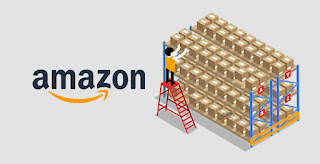Amazon Inventory Management: The Key to Success
Amazon is the largest online retailer in the world, with a vast range of products available to millions of customers worldwide. In order to keep up with this demand and maintain a competitive edge, effective inventory management is crucial for both Amazon sellers and Amazon itself.
In this article, we will delve into the intricacies of Amazon inventory management, its benefits, strategies, tools, and best practices.
Understanding Amazon's Inventory Management System
Amazon's inventory management system is a sophisticated algorithm that helps sellers optimize their inventory levels by balancing sales, returns, and stock levels. The algorithm uses data such as sales velocity, lead time, and demand forecasting to determine the ideal inventory level for each product.
The Benefits of Effective Inventory Management
Effective inventory management provides several benefits for both Amazon sellers and Amazon itself. For sellers, it helps reduce storage costs, prevent stockouts, and improve order fulfillment rates. For Amazon, it ensures that customers have access to products and helps maintain their reputation as a reliable retailer.
Strategies for Efficient Inventory Management on Amazon
To ensure efficient inventory management on Amazon, sellers need to implement effective strategies such as:
Conduct Regular Inventory Audits:
One of the most important strategies for efficient inventory management on Amazon is to conduct regular inventory audits. By tracking sales trends and identifying slow-moving products, sellers can make informed decisions about which products to restock and which ones to remove from their inventory. This helps reduce storage costs, prevent stockouts, and improve order fulfillment rates.
Implement Inventory Forecasting:
Inventory forecasting is the process of predicting future demand for a product and planning inventory levels accordingly. This can help sellers optimize their inventory levels and reduce the risk of overstocking or stockouts. By using historical sales data, seasonality trends, and market demand analysis, sellers can determine the ideal inventory levels for each product and plan accordingly.
Monitor Product Lead Times:
Product lead time is the time it takes for a product to be restocked once it runs out of stock. It is crucial to monitor product lead times to ensure that stock levels are replenished in time to meet demand. By tracking supplier lead times, transit times, and order processing times, sellers can ensure that they have enough stock on hand to fulfill customer orders without delays.
Set Up Automated Inventory Alerts:
Setting up automated inventory alerts can help sellers stay on top of their inventory levels and receive notifications when stock levels fall below a certain threshold. This can help prevent stockouts and ensure that sellers can restock products in time to meet demand. Amazon offers tools such as Amazon Selling Coach and Amazon Replenishment Alerts to help sellers set up automated inventory alerts.
Use Different Fulfillment Options:
Amazon offers different fulfillment options such as FBA (Fulfillment by Amazon) or MFN (Merchant Fulfillment Network) to help sellers manage inventory and order fulfillment. By using FBA, sellers can store their products in Amazon's fulfillment centers, and Amazon takes care of packing, shipping, and customer service. This can help reduce the burden on sellers and improve order fulfillment rates.
Leverage Inventory Management Software:
Several inventory management software options are available to help sellers optimize their inventory levels, such as Sellbrite, Zoho Inventory, and Skubana. These tools can help sellers track inventory levels, monitor sales trends, and generate inventory reports. They can also automate tasks such as order processing and shipping, saving time and effort for sellers.
Review and Adjust Inventory Levels Regularly:
Reviewing and adjusting inventory levels based on sales trends and seasonality is a critical strategy for efficient inventory management on Amazon. By regularly reviewing inventory levels, sellers can identify slow-moving products and adjust inventory levels accordingly. They can also anticipate future demand and plan accordingly to avoid overstocking or stockouts.
Tools and Software for Amazon Inventory Management
Several tools and software are available to help sellers optimize their inventory levels, including:
Inventory management software such as Sellbrite, Zoho Inventory, and Skubana.
Repricing tools such as RepricerExpress and SellerActive, adjust prices to match market conditions.
Forecasting tools such as Forecastly and RestockPro, help predict demand and plan accordingly.
Shipping management tools such as ShipStation and Shippo, streamline the shipping process and reduce errors.
Best Practices for Optimizing Amazon Inventory
To optimize Amazon inventory, sellers should follow these best practices:
Use product identifiers such as Amazon UPC codes to ensure accurate inventory tracking.
Set realistic lead times to avoid stockouts and overstocking.
Price products competitively to maximize sales.
Regularly review and adjust inventory levels based on sales trends and seasonality.
Keep product listings up-to-date with accurate descriptions and images.
In conclusion, effective Amazon inventory management is crucial for the success of both sellers and Amazon itself. By understanding the system, implementing effective strategies, and using the right tools and software, sellers can optimize their inventory levels and improve their chances of success on Amazon.
Following best practices such as using product identifiers, setting realistic lead times, pricing competitively, regularly reviewing inventory levels, and updating product listings can also help sellers stay ahead of the competition and achieve long-term success on Amazon.




Comments
Post a Comment